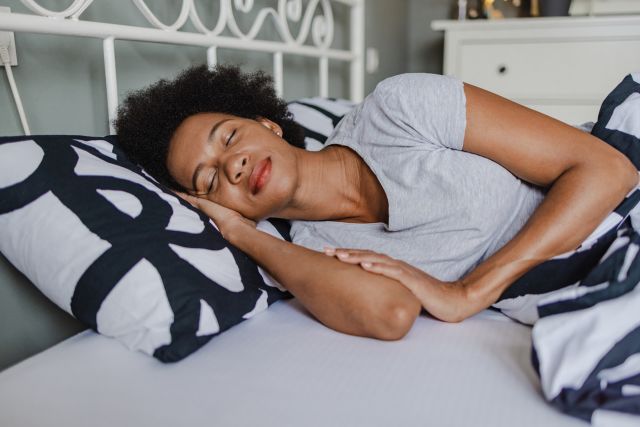Sleep should leave you feeling rejuvenated, but if you’re in pain you’re probably not getting restful sleep. In fact, people with pain are up to four times more likely to report bad sleep than people without pain, according to the National Sleep Foundation’s 2015 Sleep in America Poll.
A poor night’s sleep can make you moody and unfocused—and it can also increase your sensitivity to pain. Here are some tricks to help you get your Z’s, no matter what hurts.
If your shoulder hurts ... switch sides
Shoulder pain is known to be worse at night, says Martin Redish, MD, an orthopedic surgeon with Parkridge Medical Center in Chattanooga, Tennessee. “Any kind of shoulder pain hurts more at night because you lie flat and blood rushes to the area,” he says. Try sleeping on the unaffected side while hugging a pillow. If you’re a die-hard back sleeper, put a pillow under the bum shoulder. Propping yourself up so you’re not laying flat can also help alleviate nighttime shoulder pain, Redish says.
If your knee hurts ... squeeze a pillow
“Knee pain, especially with degenerative arthritis of the knee, often gets to the point where it can hurt at night,” says Redish. Your best bet is to sleep on your side with a pillow between your legs. The pillow will cushion your knees so they don’t rub together, says Redish. It’ll also reduce pressure on the knee while you sleep.
If your wrist hurts ... prop it up
Carpal tunnel syndrome, which causes pain or numbness in the wrist, hands and fingers, has a reputation for hurting more at night. For pain from carpal tunnel, sleep on your back, with your arm propped up by a pillow. You can also use a night splint for the affected wrist(s), says Redish.
If your back or neck hurts ... pick a firm mattress
Does back pain keep you up at night and out of work the next day? There’s a good chance the answer’s yes. Low back pain is the number one cause of disability worldwide; about 10 percent of the global population suffers from it. And, about a quarter of Americans report neck pain, the number three cause of chronic pain.
Sleeping on a firm mattress is key to fighting back pain, says Redish. Sleeping on your side with your knees drawn up relieves pressure on the spine. For neck pain, use pillows to keep your neck straight, and avoid sleeping on your stomach with your head turned.
If your hip hurts ... sleep on the other side
If hip pain is waking you up or keeping you up, you’ll want to sleep on the side that doesn’t hurt and keep a pillow between your legs. Arthritis, especially osteoarthritis, is a common cause of hip pain. About one-quarter of people will develop osteoarthritis of the hip in their lifetime. Hip problems can bring you to tears even during mundane activities like walking or climbing stairs. And, women are twice as likely as men to suffer from hip pain
The golden rule of sleep position
When it comes to pain and sleep position, the golden rule is…there is no golden rule. What’s comfortable will vary from person to person. “There’s no secret position,” says Redish. The most comfortable position will be different for everyone. Redish says get checked out by your healthcare provider if pain starts keeping you up at night.





